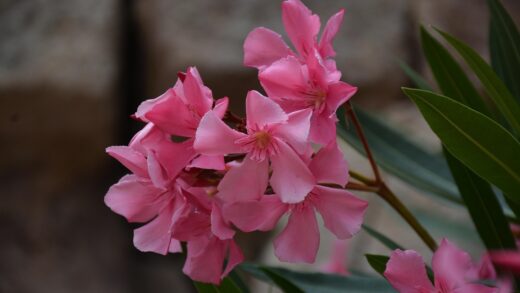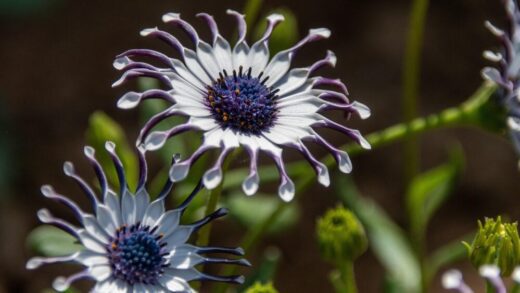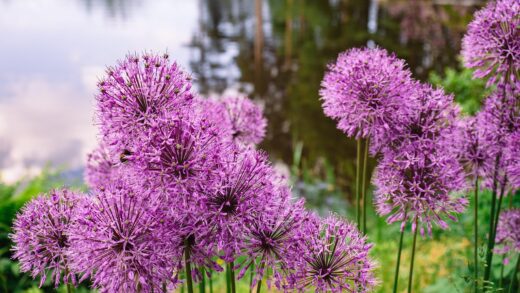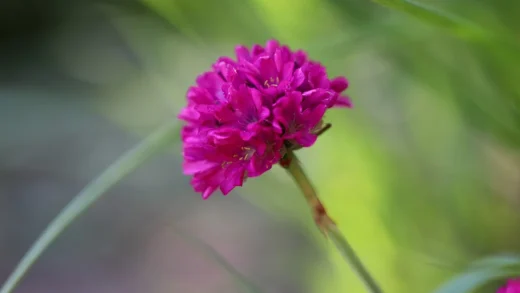Mastering the art of watering is arguably the most critical aspect of successful plumeria cultivation. These tropical beauties, with their succulent-like stems, have a complex relationship with water that can be perplexing to the uninitiated. The key to their hydration lies in understanding their natural cycle of active growth and dormancy, as their needs change dramatically throughout the year. Providing the right amount of water at the right time is the delicate balance that prevents the dreaded root rot while ensuring the plant has enough moisture to support its lush foliage and spectacular blooms. An observant and thoughtful approach to irrigation is the cornerstone of a healthy, thriving plumeria.
Understanding the plumeria’s natural tolerance
To water a plumeria correctly, one must first appreciate its inherent drought-tolerant nature. The plant’s thick, fleshy stems are not just for structural support; they are specialized water-storage organs. This adaptation allows the plumeria to survive and even thrive in environments with intermittent rainfall, making it resilient to short periods of dryness. This characteristic is a crucial clue for gardeners: the plant is far more likely to suffer from excessive watering than from being slightly too dry. Always err on the side of caution and allow the soil to dry out.
This water-storing capacity directly informs the most fundamental rule of plumeria irrigation: avoid constantly wet soil at all costs. When the soil remains saturated for extended periods, it deprives the roots of oxygen, creating an anaerobic environment perfect for the proliferation of rot-causing fungi and bacteria. The roots of a plumeria are designed to seek out moisture and then endure drier conditions, not to be submerged continuously. Therefore, a watering strategy should be based on cycles of thorough soaking followed by a distinct drying-out period.
The plant’s own life cycle dictates its water usage and tolerance. During the active growing season of spring and summer, when the plumeria is producing leaves and flowers, its water requirements are at their peak. It is actively photosynthesizing and transpiring, using water to fuel its growth. In stark contrast, during the dormant period of late autumn and winter, the plant’s metabolic processes slow to a near halt, and it sheds its leaves. In this state, it uses almost no water, and its tolerance for dry conditions is at its highest.
Observing the physical characteristics of the plant can also provide insight into its water status. A well-hydrated plumeria will have firm stems and turgid, healthy-looking leaves. If the plant is underwatered for an extended period, the stems may begin to feel slightly soft or appear shriveled, and the leaves may wilt. Conversely, the initial signs of overwatering are often less obvious but more deadly, starting with the unseen decay of roots below the soil surface, which often only becomes apparent when the leaves turn yellow and the base of the stem becomes soft.
More articles on this topic
Watering during the active growing season
The active growing season, which spans from spring through summer, is the time of greatest thirst for the plumeria. As the plant produces a full canopy of leaves and prepares to bloom, its demand for water increases significantly to support these energy-intensive activities. The primary guideline during this period is the “drench and dry” method. This involves watering the plant thoroughly until water drains freely from the bottom of the pot, ensuring the entire root ball is saturated. Then, and this is the crucial part, you must allow the soil to dry out considerably before watering again.
To determine when it is time to water again, rely on a physical check of the soil rather than a fixed schedule. The most reliable method is to insert your finger into the soil; if the top two to three inches feel dry to the touch, it is generally time for another thorough watering. Environmental factors such as temperature, humidity, and the amount of sunlight will heavily influence how quickly the soil dries. During a hot, sunny week, you might need to water every few days, whereas during a cooler, overcast period, it might be a week or more.
The size of the container and the type of soil mix also play a significant role in watering frequency. A plant in a smaller pot will dry out much faster than one in a large container. Similarly, a very porous, fast-draining soil mix, which is ideal for plumerias, will require more frequent watering than a heavier, more water-retentive soil. This is why it is essential to tailor your watering habits to your specific plant’s conditions rather than adhering to a generic “water once a week” rule.
Pay close attention to the plant’s response to your watering routine. Healthy, active growth and vibrant green leaves are signs that your irrigation practices are on track. If you notice the lower leaves consistently turning yellow and dropping, it is a classic sign of overwatering. In this case, you should immediately withhold water and allow the soil to dry out much more thoroughly. Consistent observation is key to fine-tuning your watering technique throughout the dynamic summer months.
More articles on this topic
Adjusting irrigation for dormancy
As the days shorten and temperatures cool in autumn, the plumeria begins its natural transition into dormancy, and your watering practices must change dramatically to accommodate this shift. The plant will signal this change by slowing its growth and beginning to shed its leaves, which often turn a brilliant yellow before they fall. This is your cue to start reducing the frequency of watering significantly. The plant’s need for water is plummeting, and continuing to water at summer levels will almost certainly lead to root rot.
Once the plumeria has lost most or all of its leaves and has entered full dormancy, its water requirements become minimal. For a potted plumeria being stored indoors for the winter in a cool, dark place like a garage or basement, it may need no water at all for the entire season. The goal is simply to prevent the roots from becoming completely desiccated. A very light watering, perhaps just a cup of water once a month, is typically sufficient for a dormant plant.
For plumerias in warmer climates that may not go fully dormant, or for those kept as houseplants in a bright, warm room, water needs will be reduced but not eliminated. In this semi-dormant state, you should allow the soil to dry out completely between waterings. The soil should feel dry several inches down before you consider adding any more moisture. Overwatering during this vulnerable resting period is one of the most common reasons that plumerias fail to survive the winter.
Waking the plant up in the spring also requires a careful, gradual reintroduction of water. As you bring the plant out of storage and into warmer, brighter conditions, you will start to see new leaf “claws” forming at the branch tips. At this point, you can provide a light initial watering to signal the end of dormancy. Do not fully saturate the soil until the new leaves have begun to unfurl and grow to a few inches in length. This ensures that the plant is actively transpiring and able to use the water you provide.
Recognizing signs of water stress
One of the most common signs of improper watering in plumerias is the yellowing of leaves, but the location of these leaves provides important clues. If the lower, older leaves are turning yellow and dropping off, it is very often a symptom of overwatering. The excess moisture in the soil is suffocating the roots, preventing them from functioning properly and leading to a decline in the plant’s overall health, which it manifests by shedding its older foliage first. This is a critical warning sign to immediately reduce watering and allow the soil to dry.
Conversely, underwatering also presents distinct symptoms. When a plumeria is severely dehydrated, its leaves may appear wilted, limp, or droopy. The stems and branches, which are normally firm due to their stored water, may feel soft, pliable, or even look wrinkled and shriveled in extreme cases. While plumerias can tolerate periods of dryness, prolonged water deprivation will stress the plant, halt its growth, and can cause it to drop not just its leaves but also its flower buds.
A soft or mushy stem base is the most alarming sign of water stress and almost always indicates advanced root and stem rot caused by chronic overwatering. If the base of the trunk feels spongy to the touch, the internal tissue has begun to decay, a condition from which it is very difficult for the plant to recover. This symptom highlights the insidious nature of overwatering, as the damage occurring beneath the soil is severe by the time it becomes visible at the stem base. At this stage, immediate intervention, such as repotting into dry soil and trimming away all rotted tissue, is the only slim chance for survival.
Beyond visual cues, the weight of the pot can be a useful indicator of its moisture content. A pot with freshly watered, saturated soil will feel significantly heavier than a pot with dry soil. By familiarizing yourself with the weight of your potted plumeria when it is both fully watered and fully dry, you can develop a tactile sense of when it needs irrigation. This method can be particularly helpful in preventing overwatering, as it gives you a clear sense of the moisture level throughout the entire root ball, not just at the surface.
Water quality and application techniques
While plumerias are generally not overly sensitive to water quality, using water that is at room temperature is always preferable to using very cold water. A sudden drenching with cold water can shock the root system, especially during warm weather. If you are using tap water, allowing it to sit out for 24 hours can be beneficial, as this allows chlorine, which can be harsh on some plants, to dissipate. For those with very hard water, occasional watering with rainwater or filtered water can help prevent the buildup of mineral salts in the soil.
The method of application is also important for ensuring the plant is watered correctly. Always water the soil directly, avoiding wetting the foliage and flowers if possible. Consistently wet leaves, especially in humid conditions or overnight, can create an ideal environment for fungal diseases like rust or powdery mildew to develop. By directing the water at the base of the plant, you ensure it reaches the root zone where it is needed while keeping the leaves dry and less susceptible to pathogens.
When you do water, do so thoroughly and deeply. A light, superficial sprinkling only moistens the top layer of soil, which can encourage shallow root growth and leave the deeper roots dry. The goal is to saturate the entire volume of soil in the pot until water is seen escaping from the drainage holes. This ensures that the entire root system has access to moisture and also helps to flush out any accumulated mineral salts from the soil, which can build up over time from fertilizers and tap water.
For plumerias planted in the ground, deep watering is equally important to encourage a robust and extensive root system. A soaker hose or drip irrigation system can be very effective, as they deliver water slowly and directly to the root zone, minimizing evaporation and runoff. Infrequent, deep waterings are far more beneficial for in-ground plants than frequent, shallow applications. This encourages the roots to grow deeper into the soil in search of moisture, making the plant more resilient and drought-tolerant in the long run.


















